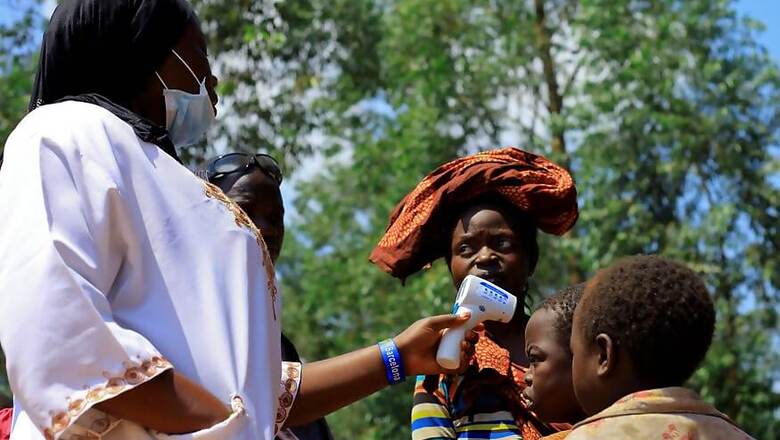
views
The World Health Organization has declared the Ebola crisis in the Democratic Republic of Congo to be a "public health emergency of international concern." However, the WHO stopped short of saying that the borders should be closed, saying the risk of the disease spreading outside the region was not high. Notably, the outbreak in the Democratic Republic of Congo has ready killed more than 1,600 people.
LIVE from WHO HQ: Press Conference on the International Health Regulations Emergency Committee on #Ebola in #DRC https://t.co/UqCigPNQyg— World Health Organization (WHO) (@WHO) July 17, 2019
The International Health Regulations Emergency Committee on #Ebola in #DRC provided the following public health advice for neighbouring countries: pic.twitter.com/CJXABbl4yh— World Health Organization (WHO) (@WHO) July 17, 2019
The International Federation of Red Cross and Red Crescent Societies (IFRC) welcomed the decision, saying the move should draw much-needed support to the affected areas.
Here's everything you need to know about Ebola:
The official moniker is Ebola virus disease (EVD); it was formerly known as Ebola hemorrhagic fever, and is often just called Ebola.
EVD first appeared in 1976 in two simultaneous outbreaks, one in Sudan and the other in Democratic Republic of Congo.
The Congolese outbreak happened in a village near the Ebola River, which is how the disease got its name.
According to the World Health Organization, the initial source of the Ebola virus was likely from human contact with wild animals through hunting, butchering and preparing the meat.
While fruit bats from the Pteropodidae family are the natural reservoir host, the virus can be transmitted through contact with bodily fluids from other infected animals including chimpanzees, gorillas, bats, monkeys, forest antelope and porcupines.
Cases in the current outbreak were first identified in March 2014.
There are five known Ebola virus strains: Ebola virus (Zaire ebolavirus); Sudan virus (Sudan ebolavirus); Taï Forest virus (Taï Forest ebolavirus, formerly Côte d’Ivoire ebolavirus); and Bundibugyo virus (Bundibugyo ebolavirus). Reston virus (Reston ebolavirus), causes infection in nonhuman primates but not in humans.
Once a person is infected, the virus spreads from human to human by direct contact (through broken skin or mucous membranes) with body fluids (such as urine, saliva, feces, vomit and semen) and surfaces contaminated with these fluids.
It is not spread through the air or by water, or food (except in the handling of bushmeat). Humans are not infectious until they develop symptoms.
Symptoms happen anywhere from two to 21 days after exposure (but eight to 10 days on average).
Initial symptoms may include sudden fever, fatigue, muscle pain, headache and sore throat. These may be followed by vomiting, diarrhea, rash, symptoms of impaired kidney and liver function, and in some cases, both internal and external bleeding. Death occurs from organ failure and sepsis.



















Comments
0 comment